Construct this simple hoist and easily rack and unrack that old PDP-11 without racking your back!
Introduction
I’m sure you are aware that old DEC PDP-11 minicomputers and peripherals are heavy bastards. Lifting one without support when racking an old Unibus CPU, RK05 or tape unit could seriously hurt your back if you’re not careful, as well as potentially damage your precious gear. The PDP-Lifter described here should hopefully reduce the chance of a back injury as well as be able to finely adjust the height of the equipment up or down and in and out to allow the rack slide screws to be located level with the device.
In addition the PDP-Lifter can do this both outside the rack or be wheeled under and partially or completely into the rack (eg. a DEC H960) allowing a non-rackslide fixed device (ie. on a shelf) to be installed or removed, provided a 1RU gap is available to slide the platform in. The PDP-Lifter came into existence after some discussion on the cctalk mailinglist about how to lift heavy and fragile gear to and from 19″ racks. Some suggestions of a scissor-lift trolley jack were given, however the expense of that particular unit itself and the subsequent cost of importation from the US to Australia would have been prohibitive. And even then it was quite large and would have been unable to roll underneath and into the H960 rack anyway. Other people have used slings and engine lifting gantries, but I felt what was needed was a more bespoke solution.
Looking around my garage I realised I already had a fair amount of odds and ends to build a simple, light duty lifter without spending a lot of money. Its capacity is restricted to around 70kg maximum and has been successfully tested to that limit with a stack of house bricks. My FOX 2 CPU weighs in at around 39kg so this is well within the lifting range of the device.
You can build a PDP-Lifter yourself. Hopefully the following photos, description and Bill Of Materials will be enough to get you going. By no means is the device critical in any dimension apart from the need to keep the top of the caster legs lower than the bottom of the H960, and that the platform width must be narrow enough to accommodate being lifted up and down clear between any rack slides already fixed in place that impinge upon the inner of the equipment rack. Apart from that, the rest will depend on what you find in your location.
Usage
Here are some photos of the PDP-Lifter being used to lift, transport, adjust finely up and down my FOXBORO FOX 2 computer, a rebadged PDP-11/15. The PDP-11/15 is mostly similar to the PDP-11/20 except it has a 16-bit address switch register and KC11 CPU instead of the /20’s 18-bit switch register and KA11 CPU module set.
This particular computer ran process control for fire prevention in the Furnace Oxygenation Plant at the BHP steelworks, Port Kembla, Australia from its installation in 1974 to its decommissioning sometime late in that decade. As such it has some provenance in Australian computing history. It was saved from being scrapped when I went on an interstate road trip to recover it in early 2016. As I was not permitted to have the original PDP-11/20-style rack slides when recovering the equipment, and cost of importation of some pairs of original Chassis-Trak units from the USA was going to be on the order of $500 postage alone, I modified a salvaged pair of modern server rack slides to suit.
The rack was originally a 12RU solid-walled cabinet for holding TV station equipment that I split into two and rewelded the back verticals above the fronts, doubling the height. The sides and top panel were cut out and a mesh fitted to the top to stop things falling in.. The replaced back verticals of the rack are pieces of angle iron salvaged from an old bed frame, drilled with RU-spaced holes.
The interconnect panel behind the paper tape reader is the FOXBORO DBI bus, which is essentially a breakout board from a double-wide Unibus cable from the PDP-11 to a series of Winchester MRAC connectors. I managed to save some of the cables for this.
Construction
Right, let’s get started. Please note that the photos have been rearranged a little bit from the order in which they were originally taken to show a more logical sequence of construction steps.
Testing
 | The FOX 2, weight approximately 39kg (86 lbs), at the bottom of the trolley and ready for wheeling about. Note the plywood platform is slightly narrower than the width of the computer itself. |
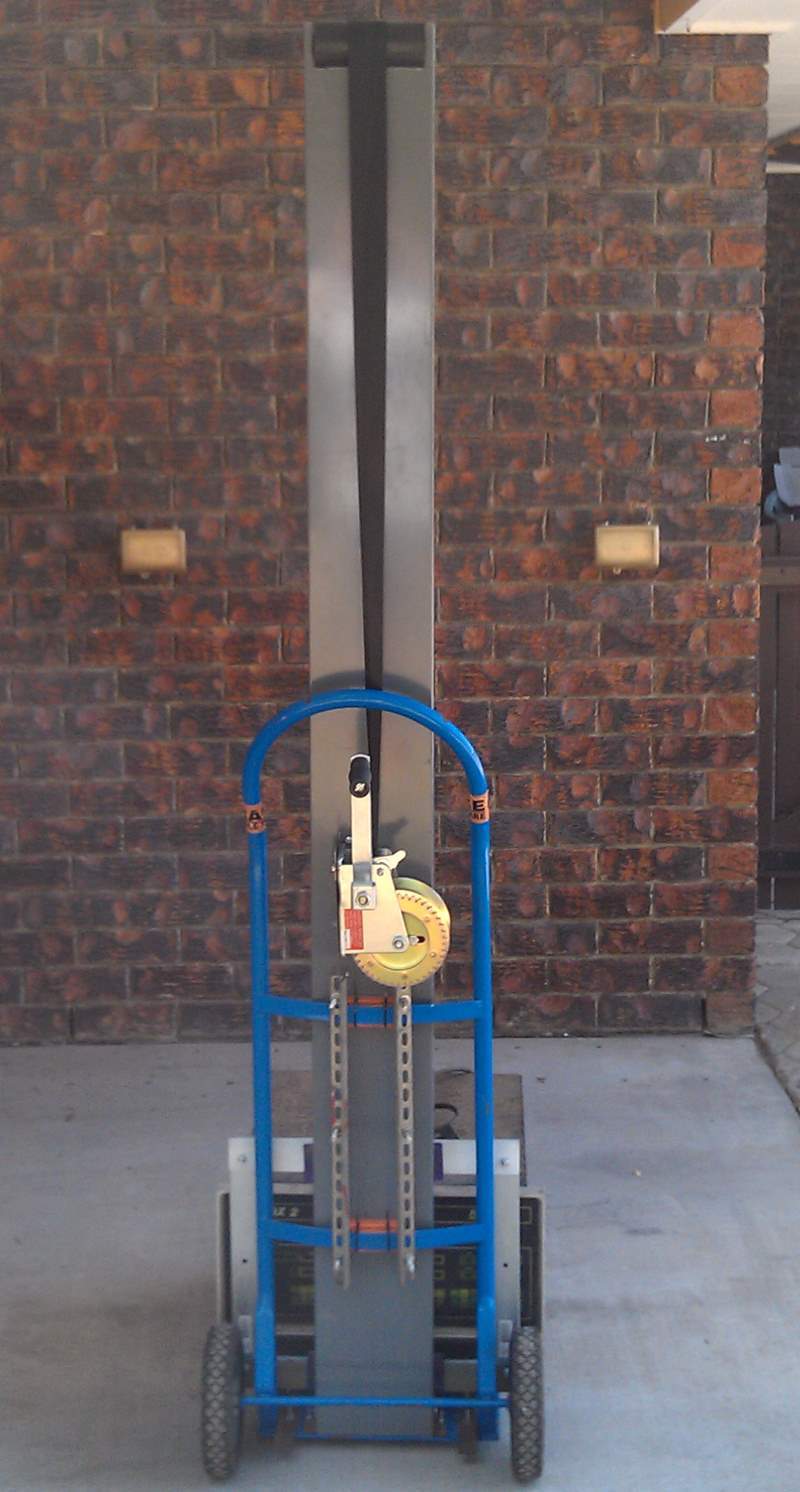 | Back of the PDP-Lifter with computer at ground level. |
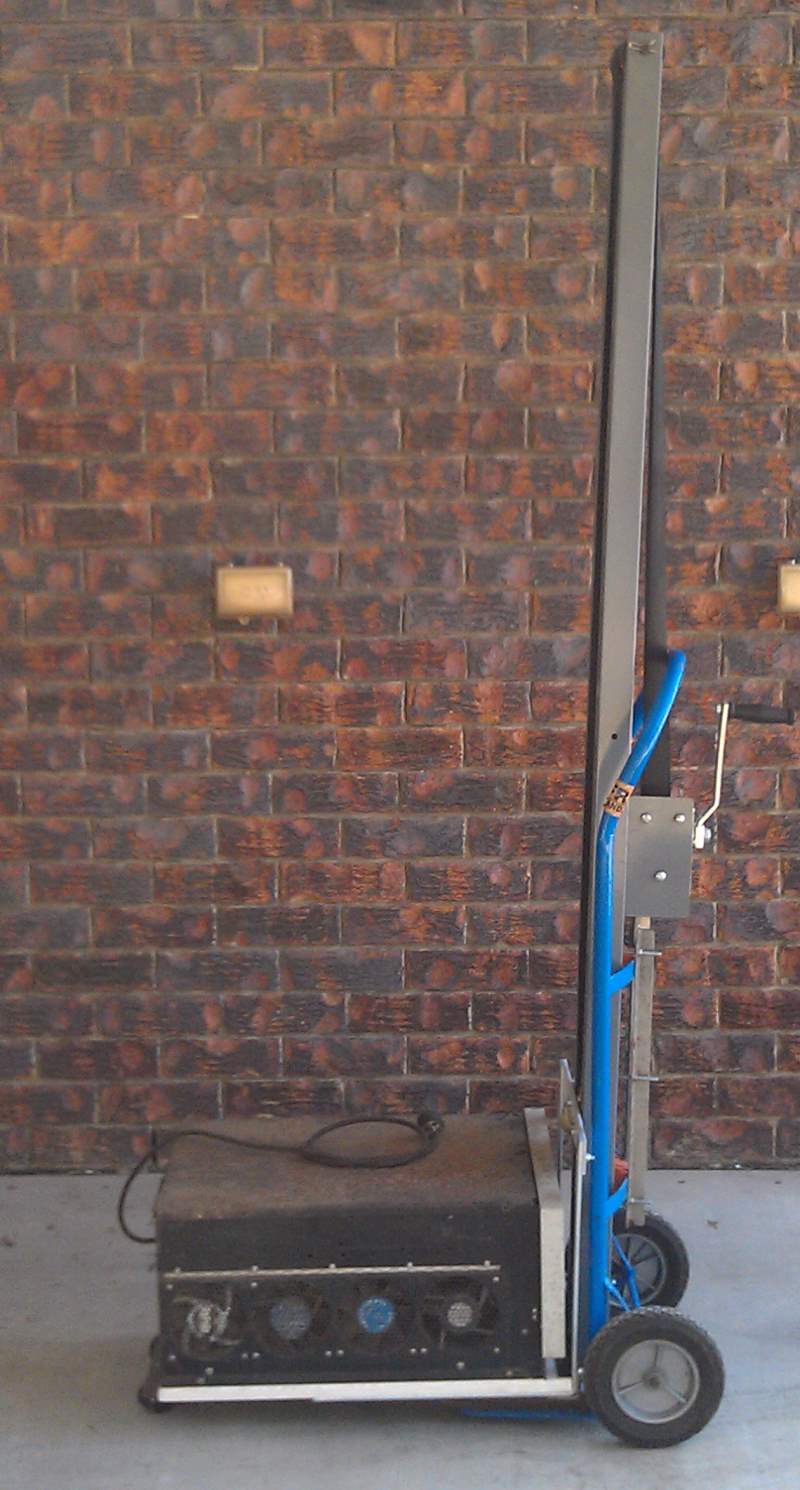 | Side view. |
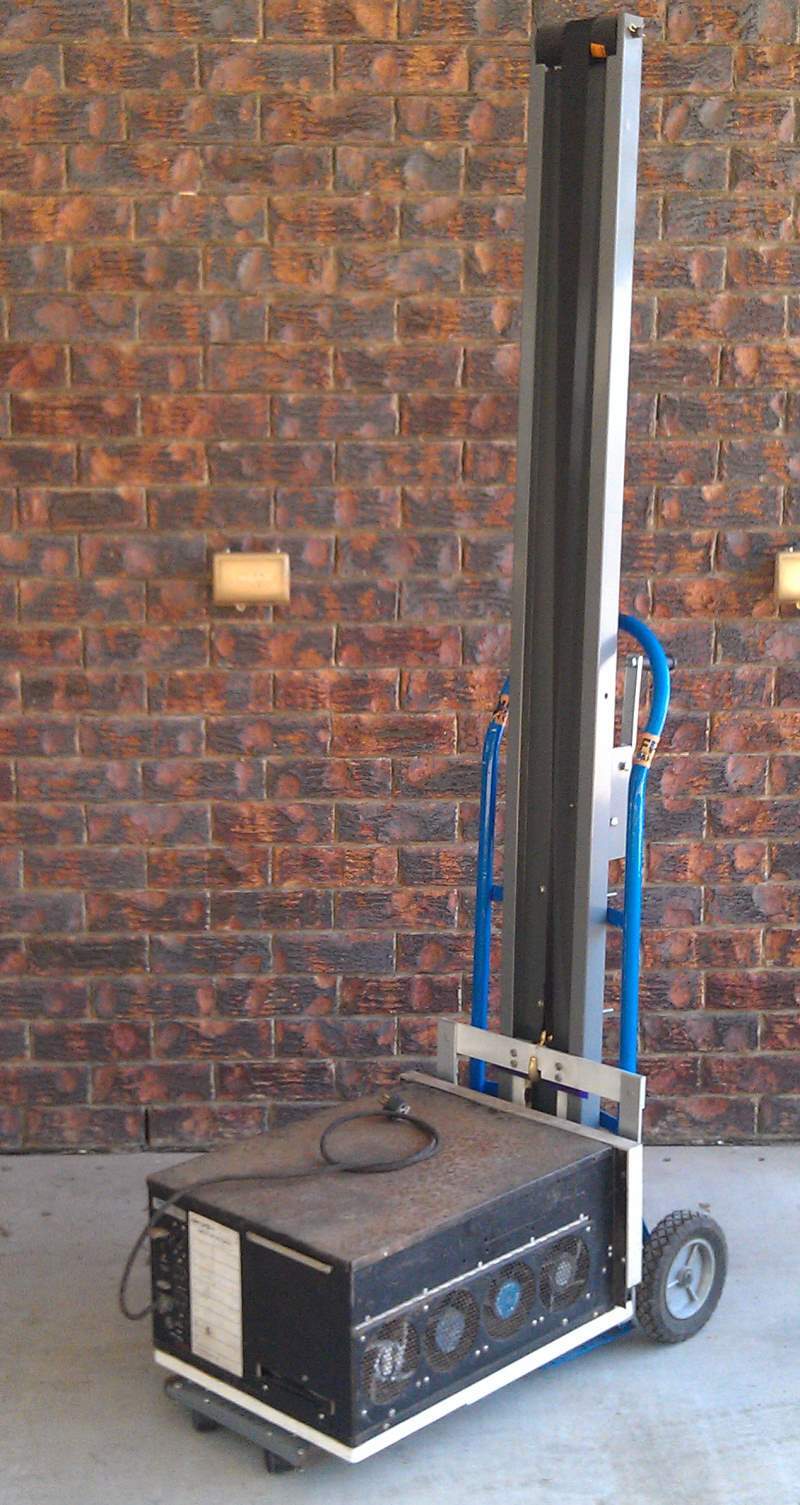 | Three-quarter view showing the back of the computer. |
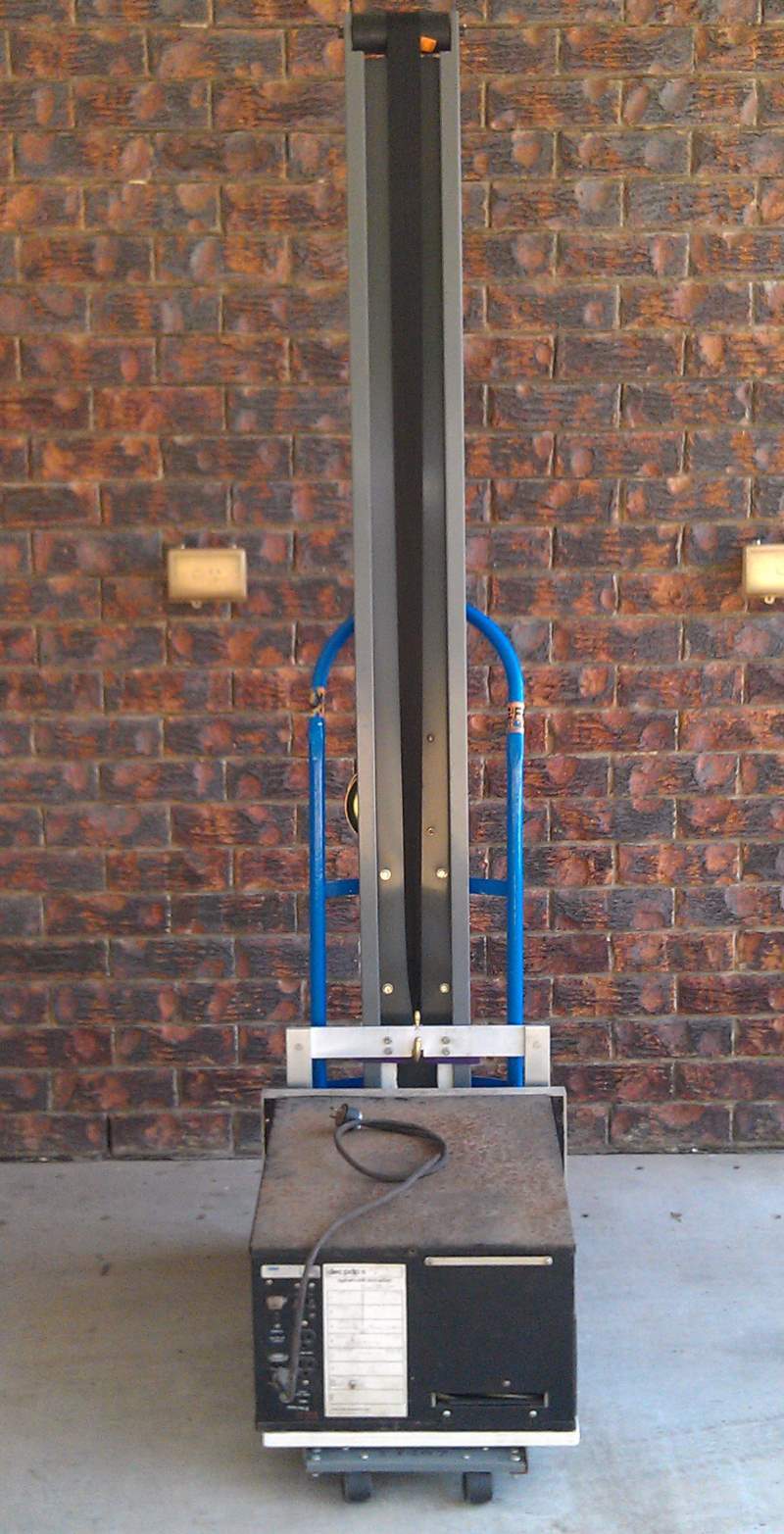 | Another view. |
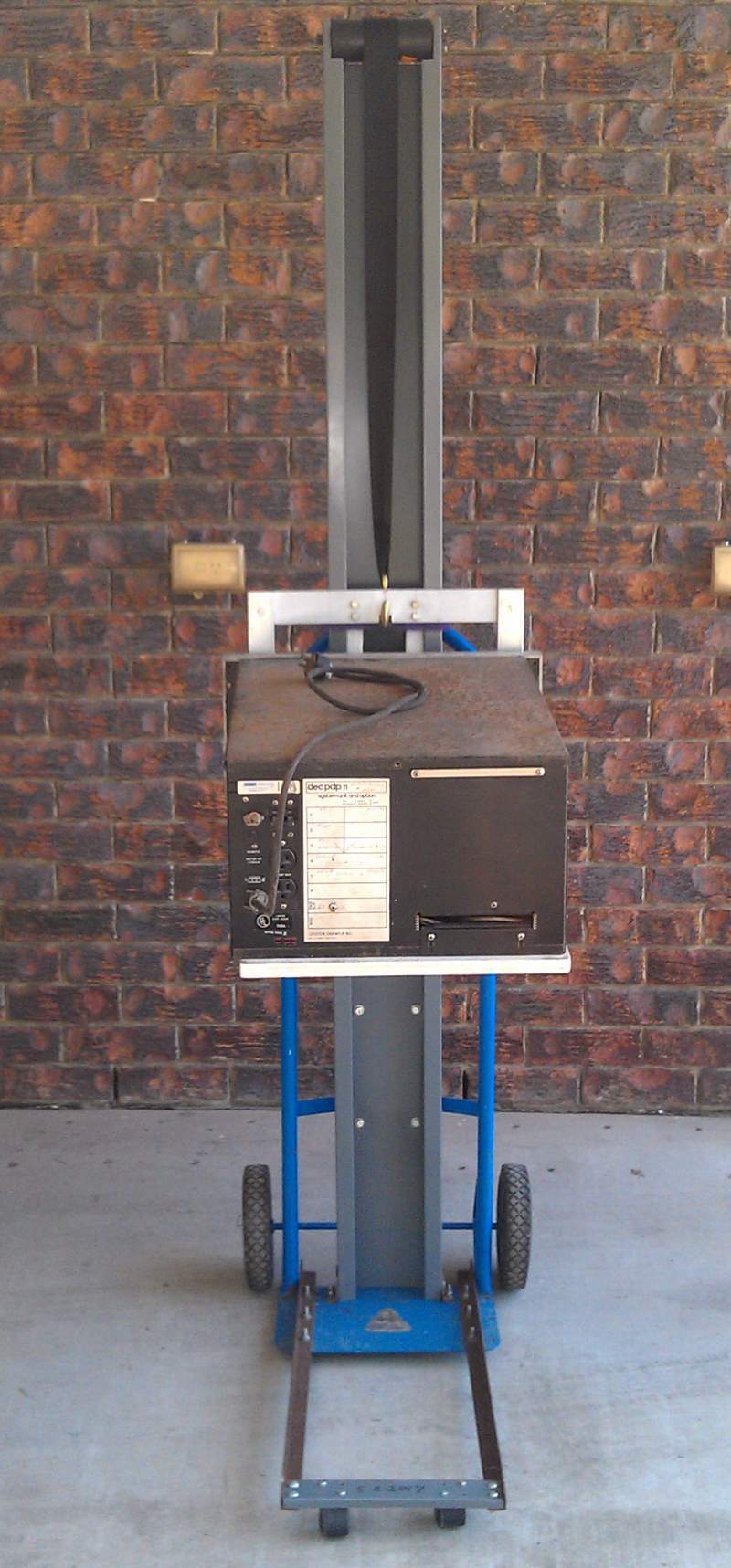 | We have liftoff! |
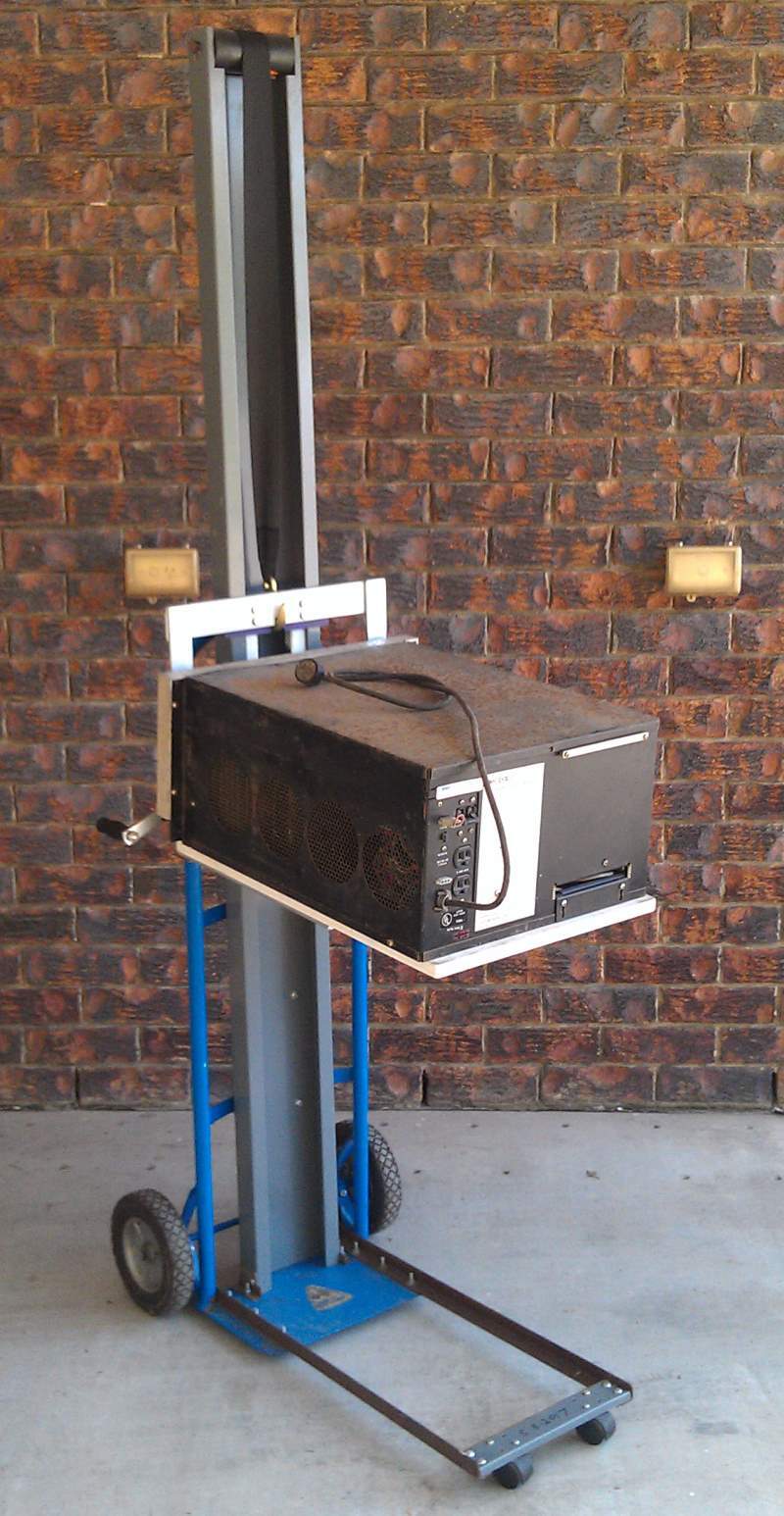 | Hasn’t crashed back to the concrete yet, so all good. |
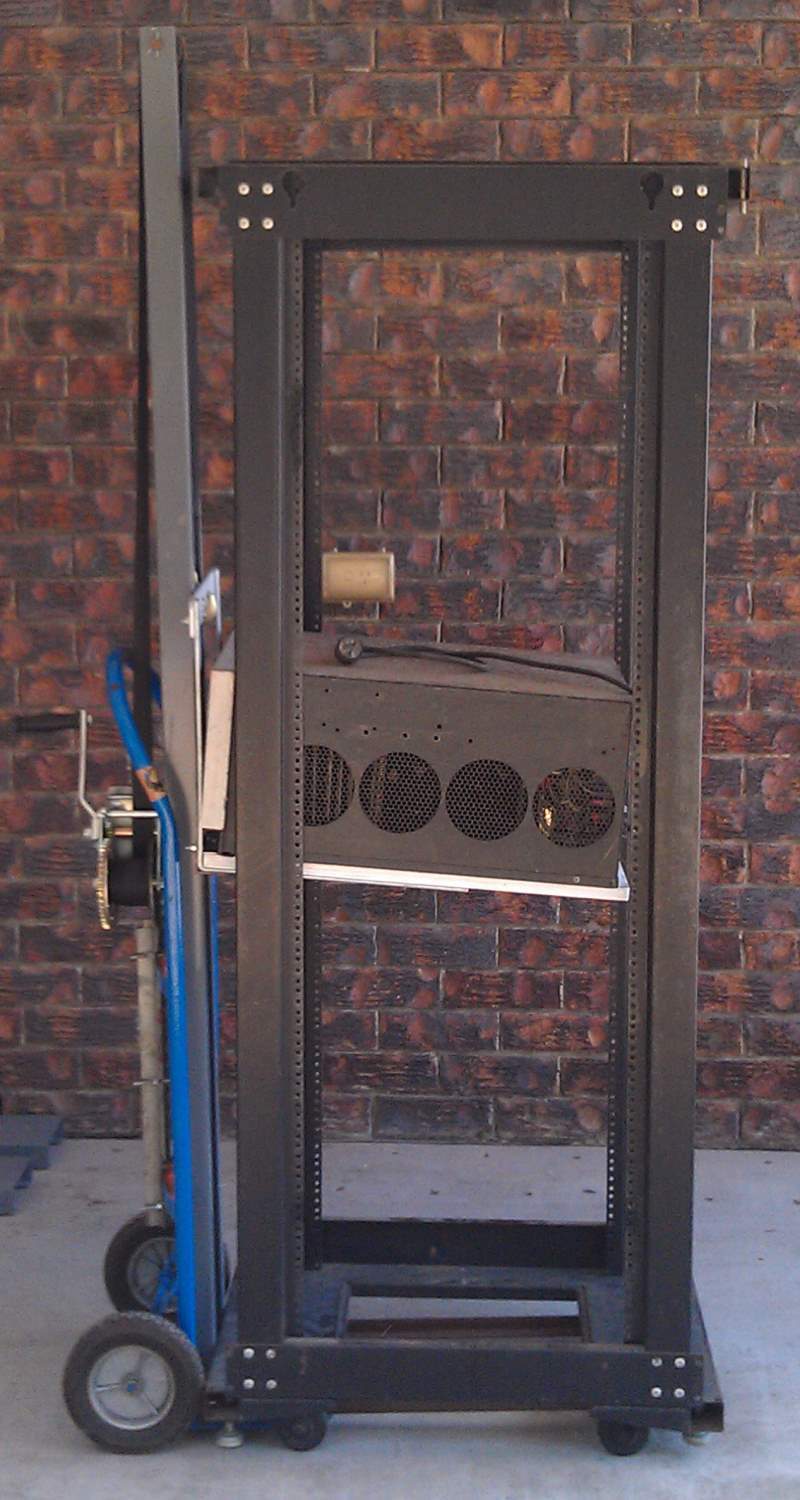 | Test positioning the computer inside an H960 rack. This is not the rack this computer will be going in. Notice the slight angle leaning down, there is a lot of weight on those two brackets. Ideally a third or even fourth furniture bracket located inside the other two would take some more of the weight and level it out, but I’ve had no problems with it. It’s a tight fit for the caster legs under the rack, four smaller casters would probably be better. |
 | The channel is right up to the front of the H960 rack in this photo. |
 | How it looks, closer up. |
 | The PDP-Lifter being removed after initial racking of the FOX 2 in a smaller rack. After this I used the device to move the computer up a further 2 RU height, which was now a trivial and quick operation. Notice the rack’s homemade support legs, which can be extended out about 500mm or so, and afterwards completely retracted under the rack. The paper tape reader is the same Digitronics unit installed with the FOX 2 in its original FOXBORO cabinet at BHP, which was enormous. |
 | The computer on modified modern server rack slides. It can pivot up 90 degrees as per the original setup. Next to be racked directly underneath the FOX 2 will be the DEC ME-11L memory expansion unit in the H-909 chassis (same as the PDP-11/05 slimline cabinet) then a BA-11K expansion box with some DD-11 modules, this provided the interconnection between the PDP-11/15 and the ME-11L. These were the original boxes connected to the computer as installed at BHP Port Kembla during the 1970s. I just need to finish some more modern server rack slide conversions then I’ll get to it. |
Bill Of Materials
| Item# | Qty | Description |
| Trolley and frame | ||
| 1 | 1 | Hand cart, 200mm (8″) dia solid plastic and rubber wheels |
| 2 | 1 | Office desk channel, C-profile, 1.6mm thick mild steel, powder coated, 1980mm long x 170mm wide x 50mm high with 112mm channel gap (78″ x 6-3/4″ x 2″, 4.41″ gap) |
| 3 | 1 | Hand winch, 545kg (1200 lb) capacity with nylon belt webbing and hook |
| 4 | 2 | Angle iron, for baseplate caster legs, 740mm long x 25mm x 25mm x 3mm thick (29″ x 1″ x 1″ x 1/8″) |
| 5 | 1 | Metal bar, for front caster support 288mm x 50mm x 5mm (11-3/8″ x 2″ x 1/4″ thick) |
| 6 | 2 | Caster, furniture, plastic 40m dia (1-1/2″ dia) with flat square plate fixture |
| 7 | 6 | Spacer, for caster support bar to angle iron base, steel plate or bar, 50mm x 20mm x 5mm thick (2″ x 3/4″ x 1/4″ thick) |
| 8 | 1 | Bracket, steel, 1.6mm thick to affix winch at right angle to channel 180mm x 100mm x 45mm (7-1/4″ x 4″ x 1-3/4″) |
| 9 | 2 | Angle iron, for channel attachment to trolley 460mm x 25mm x 25mm x 3mm (18″ x 1″ x 1″ x 1/8″ thick) |
| 10 | 2 | Angle iron, for securing bottom of channel to trolley baseplate 60mm x 25mm x 25mm x 3mm thick (2-1/4″ x 1″ x 1″ x 1/8″ thick) |
| 11 | 2 | Wooden spacer block 80mm x 50mm x 30mm thick with curved surface (3″ x 2″ x 1-1/4″) |
| 12 | 4 | Cable ties, secure spacer to trolley frame |
| 13 | 1 | Boat trailer roller, rubber, 144mm x 64mm dia (5-5/8″ x 2-1/2″ dia) |
| 14 | 1 | Rod, steel (from scrapped printer/photocopier etc) 195mm x 15mm dia (7-5/8″ x 5/8″ dia) |
| 15 | 2 | Presto pin (R-pin) 40mm long (1-1/2″) |
| Lifting platform | ||
| 16 | 2 (minimum) | Shelf bracket, 380mm x 380mm x 40mm wide, 5mm thick (15″ x 15″ x 1-1/2″ wide, 1/4″ thick). NOTE: 3 or even 4 of these would provide a more level platform. |
| 17 | 1 | Metal bar, 420mm x 50mm wide x 5mm thick (16-1/2″ x 2″ x 7/32″ thick) with 10mm x 15mm (3/8″ x 5/8″) recess notch cut in middle of lower edge |
| 18 | 1 | Angle iron, 420mm x 45mm x 45mm x 3.2mm thick (16-1/2″ x 1-5/8″ x 1-5/8″ x 1/8″ thick) |
| 19 | 1 | Metal strip, 420mm x 20mm wide x 3.2mm thick (16-1/2″ x 3/4″ x 1/8″ thick) |
| 20 | 1 | Plywood, 595mm x 420mm x 17mm thick (23-3/8″ x 16-1/2″ x 3/4″ thick) |
| 21 | 2 | Bar or RHS up to 20mm thick, 385mm x 50mm x 5mm thick (or RHS up to 20mm thick) (15-1/4″ x 2″ x 1/4″ thick or 3/4″ thick) |
| 22 | 4 | Spacer, steel plate or bar, 50mm x 20mm x 5mm thick (2″ x 3/4″ x 1/4″ thick) |
| 23 | 2 | Plastic slide strip sheet, outer, 2mm thick HDPE/LDPE/Nylon, 200mm x 50mm (8″ x 2″) |
| 24 | 2 | Plastic slide strip sheet, inner, 2mm thick HDPE/LDPE/Nylon, 166mm x 50mm (6-1/2″ x 2″) |
| Sundry | ||
| 25 | 12 | Nuts and screws, zinc plated, csnk, M6 x 25mm (1/4″-20, 1″ long), with nyloc nuts |
| 26 | 24 | Nuts and screws, zinc plated, hex-hd, M6 x 50mm (1/4″-20, 2″ long) with nyloc nuts |
| 27 | 10 | Nuts and screws, zinc plated, hex-hd, M6 x 25mm (1/4″-20, 1″ long) with nyloc nuts |
| 28 | 8 | Screws and nuts to suit casters, M4 x 15mm (3/16″ x 3/4″ long) |
| 29 | 8 | Woodscrews, 19mm (3/4″) long to secure plywood platform to shelf brackets |
Tools required
- Electric hand drill and range of drill bits
- Hacksaw and/or Jigsaw
- Engineers square
- Ruler and tape measure
- Permanent marker and pencil
- Centrepunch
- Hammer and/or rubber mallet
- Paint
- Knife or scissors
- Screwdrivers
- Spanner to suit M6 or wrench to suit 1/4-20 nuts
- Quick-release clamps or G-clamps
- Beer
- Coffee
NOTE. Whilst all reasonable care has been taken to build and document a useful device, I take no responsibility for your own version should you decide to build one.
Use common sense when operating and be always be prepared to jump out of the way should anything untoward happen!
Last updated: 20221021



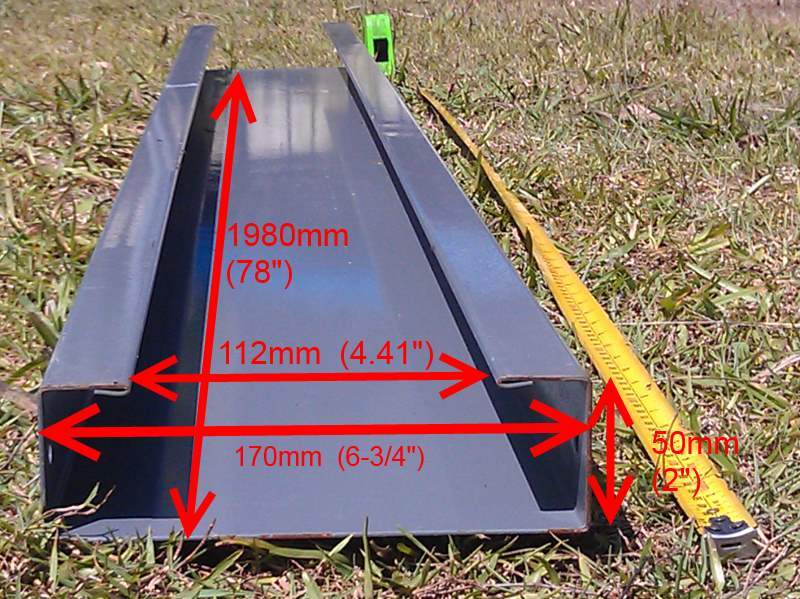

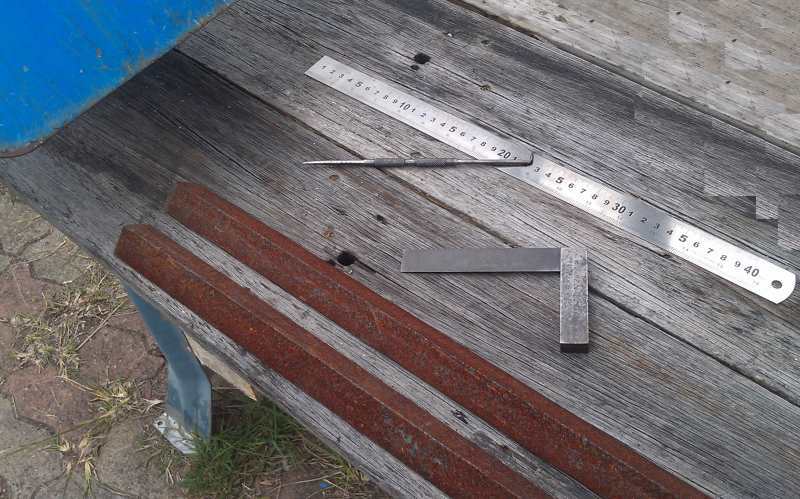



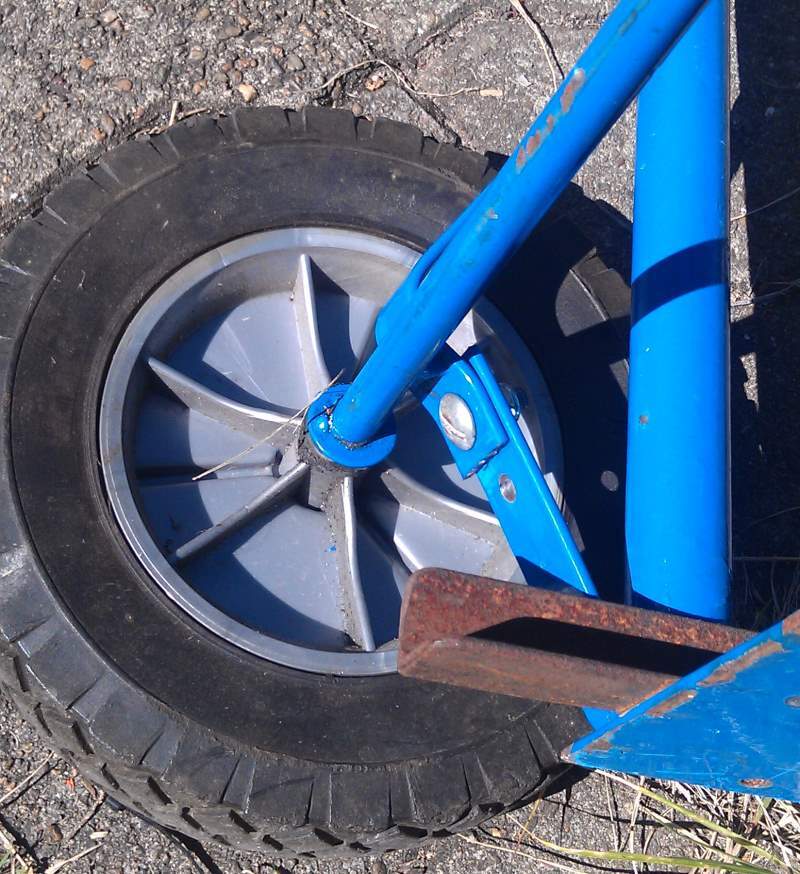
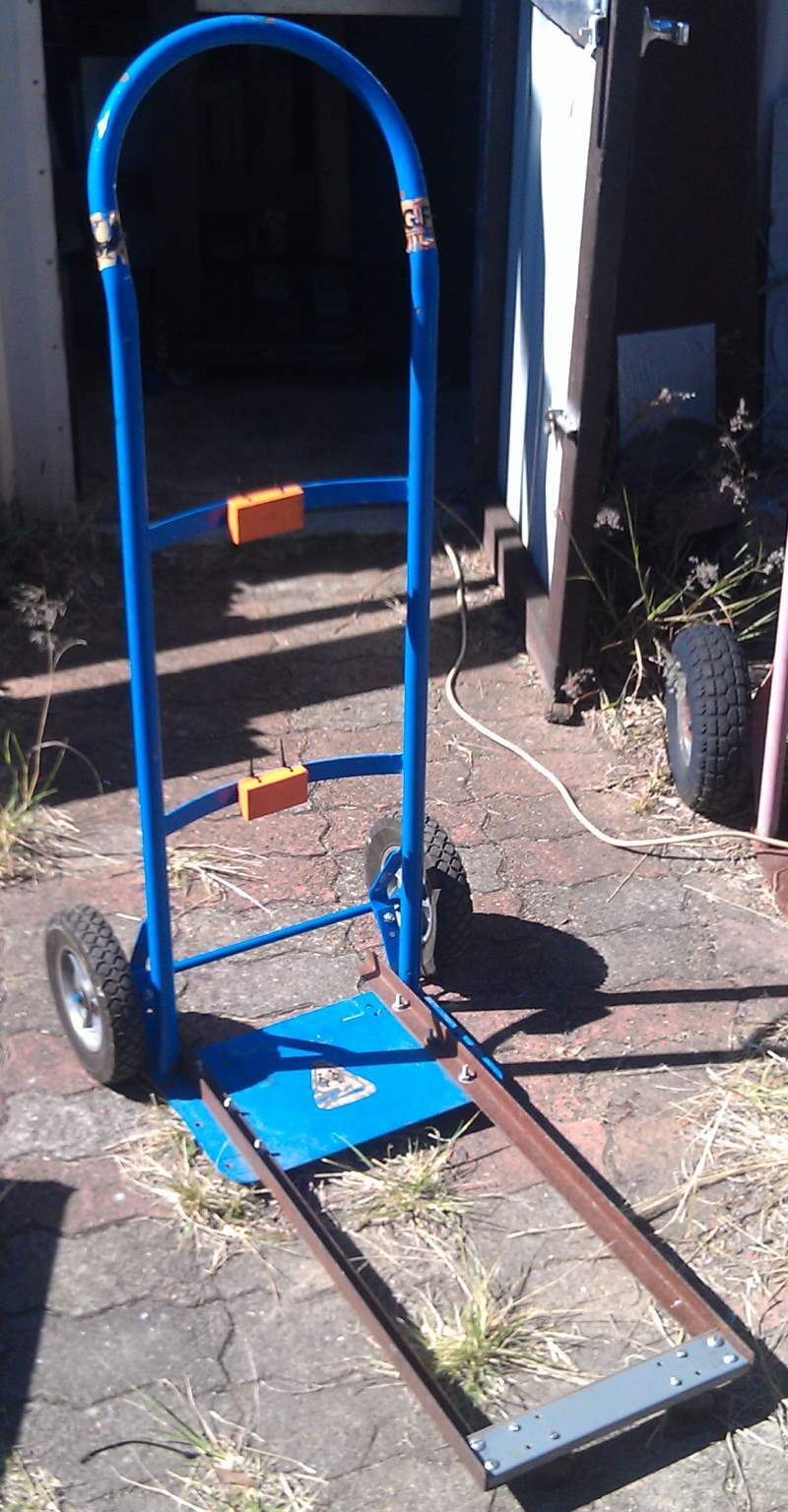


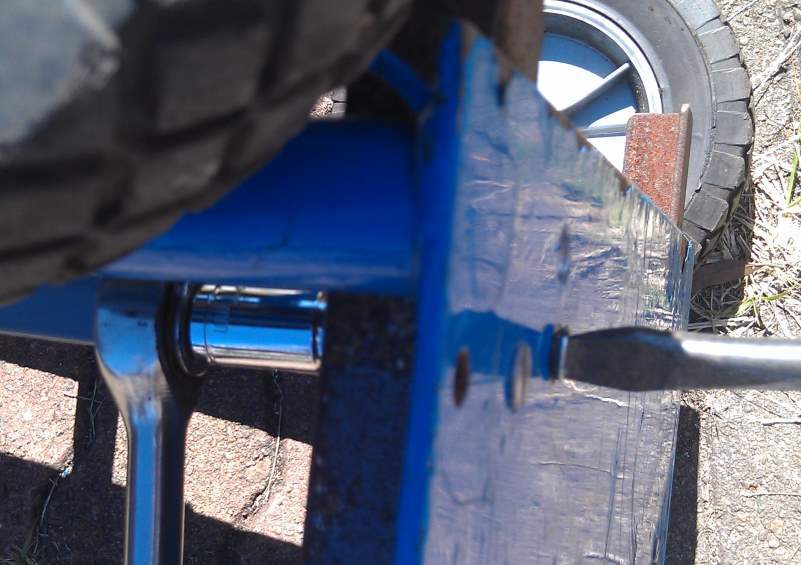



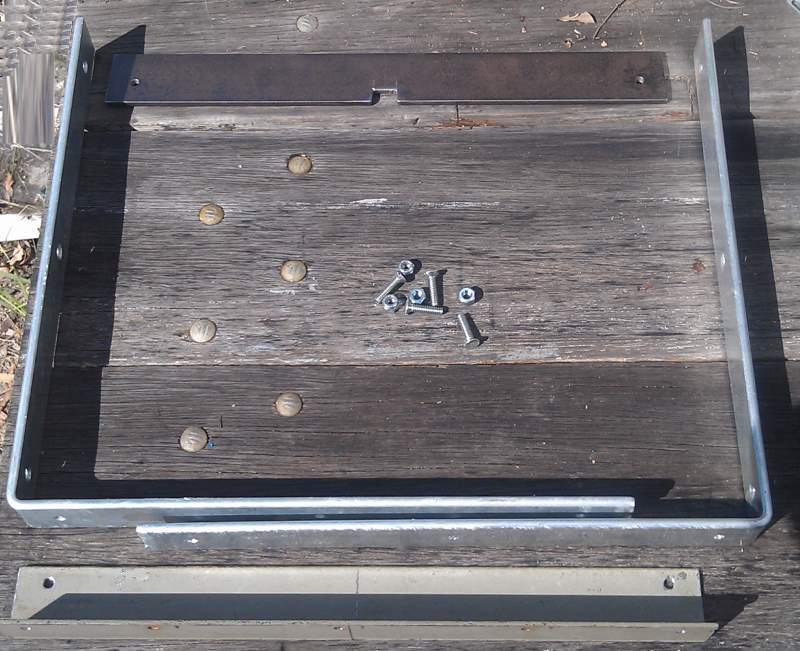


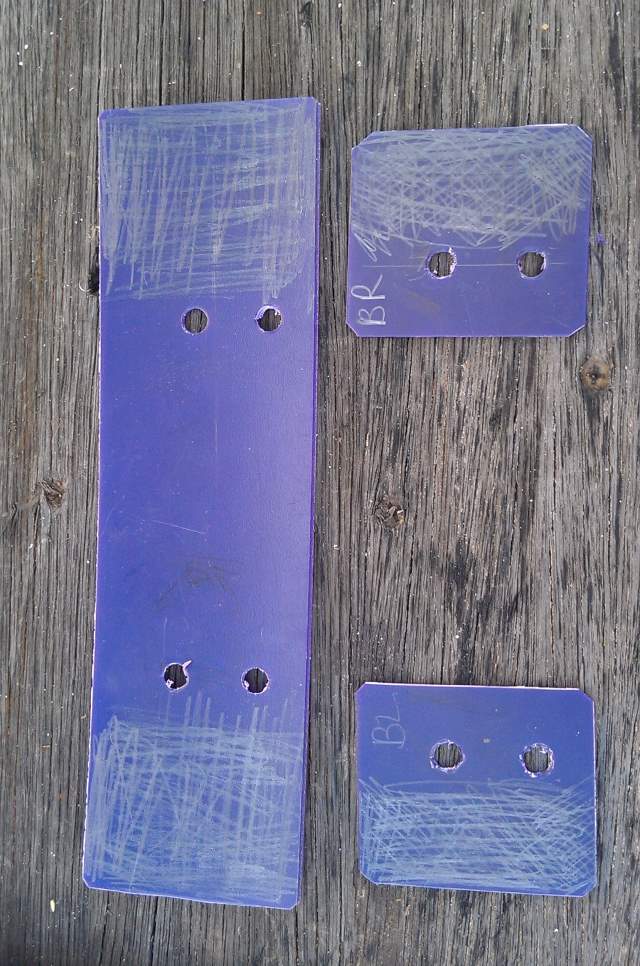

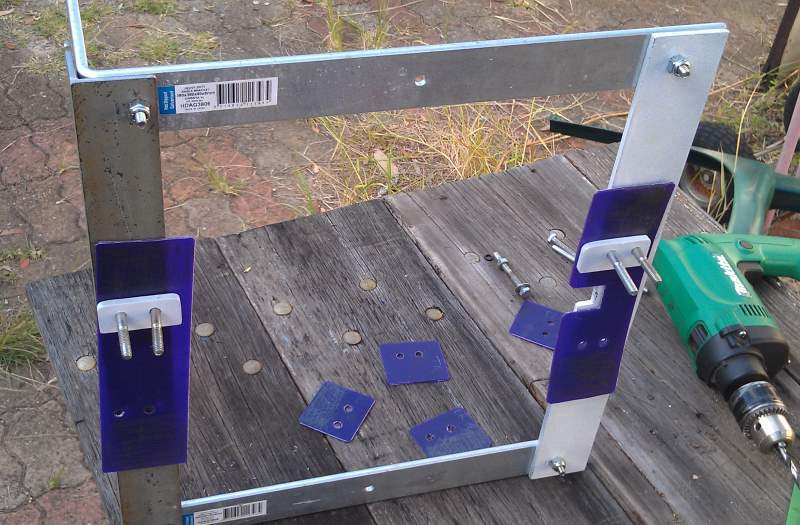

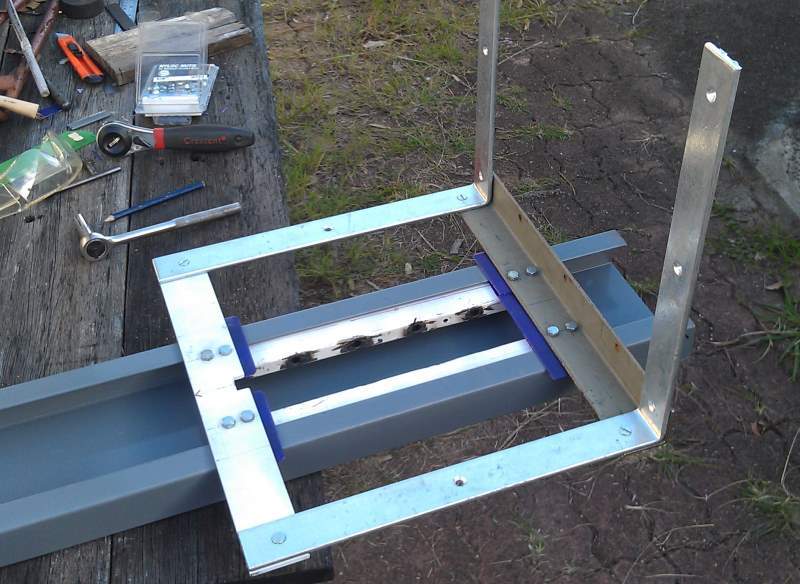
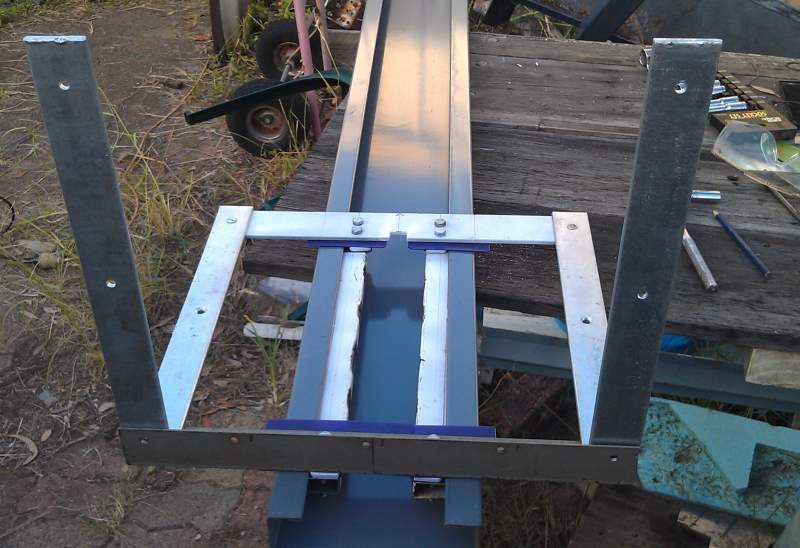
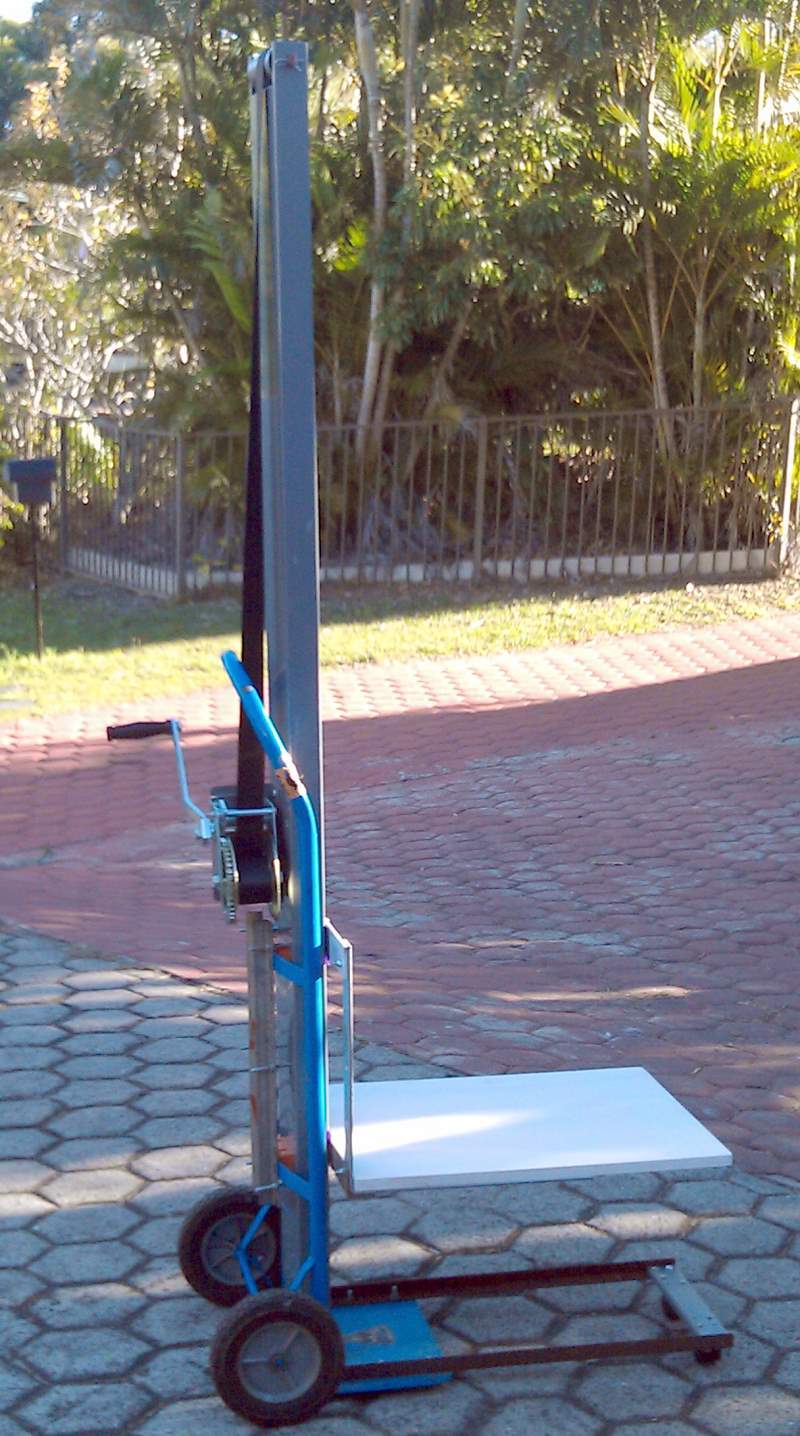

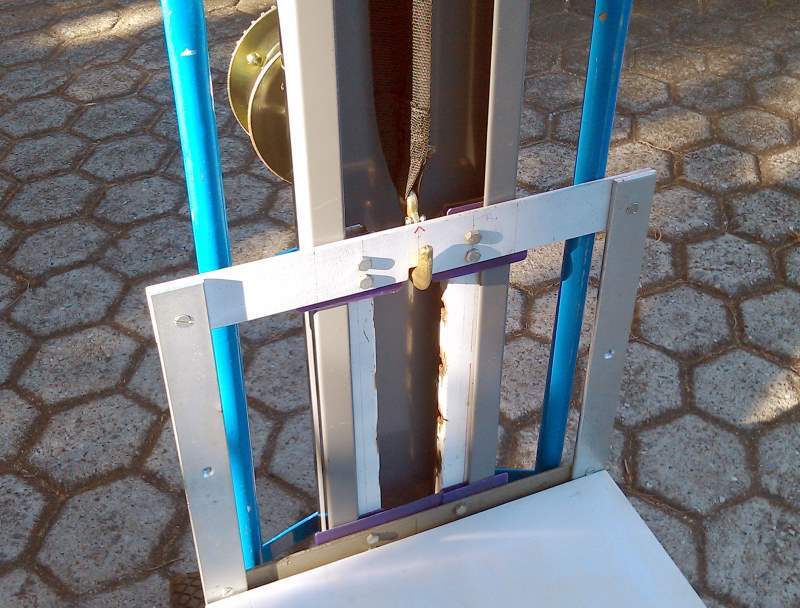
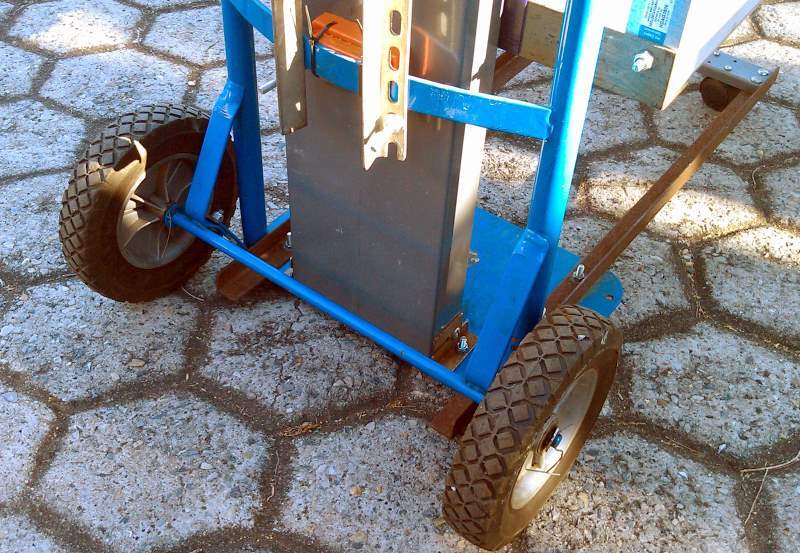

1 Comment
Best view i have seen !